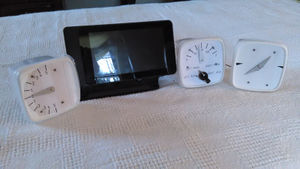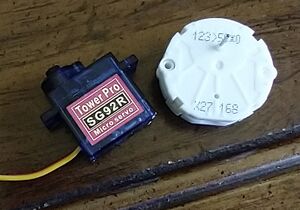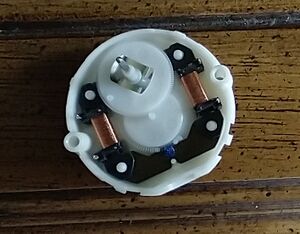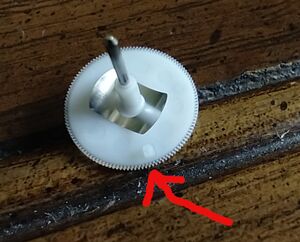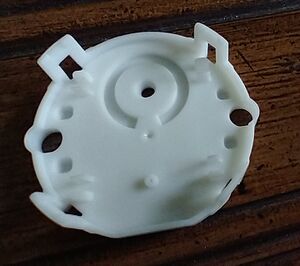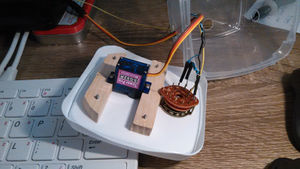aPionics
aPionics uses the Raspberry Pi to drive external avionic instruments.
Instrument Needles
Roof flashing makes a suitable material for making the instrument needles.
Instrument Housings
The housings are up-cycled food containers from the local deli. There are a few possible advantages to making stand alone gauges.
Possible Advantage
- Can be used on a desk.
- Later they could be installed into a panel.
- Can be using the ones made while the next instrument is being developed.
- If one instrument is lacking, it can be used while an upgrade instrument is being worked on.
Instrument Stepper Motors
Automotive instrument stepper motors seem to work with the Pi-Plate Motor Controller. They cost about the same as an imported R/C micro servo or a bit less. They have a travel limit snubber, however that can be removed. Refer to the photos. This is an example of the X27 168 GM instrument cluster stepper motor.
Fuel Gauge
The inside of the fuel gauge is shown in the photo. The needle movement is accomplished with a hobby servo. The fuel tank selector switch takes advantage of one of the Analog to Digital Converter (ADC) that the TINKERplate has. The resistor, soldered to the rotatory switch is a simple voltage divider. Every used switch position is assigned a voltage level that corresponds to a specific fuel tank.
